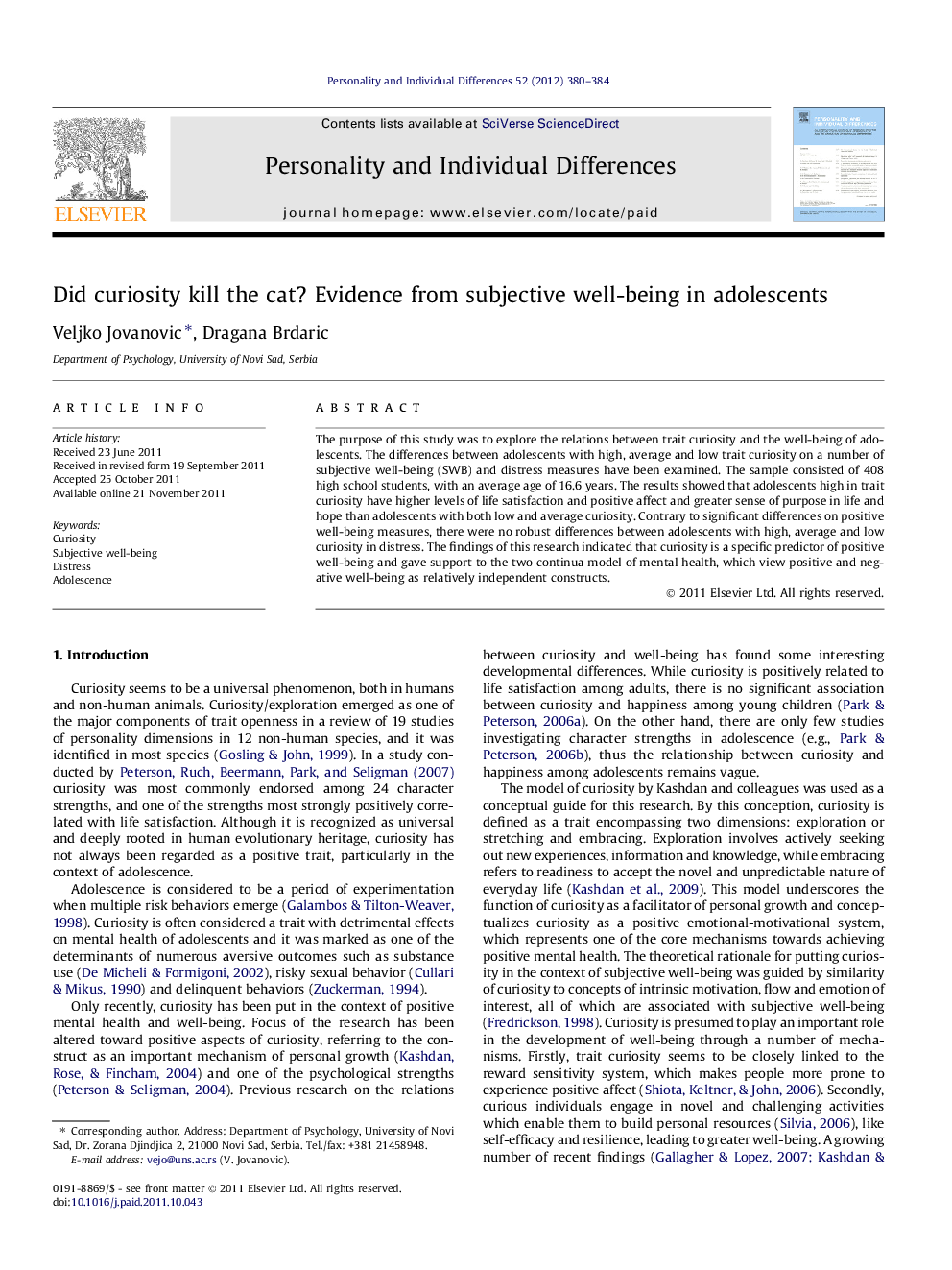| Article ID | Journal | Published Year | Pages | File Type |
|---|---|---|---|---|
| 891460 | Personality and Individual Differences | 2012 | 5 Pages |
The purpose of this study was to explore the relations between trait curiosity and the well-being of adolescents. The differences between adolescents with high, average and low trait curiosity on a number of subjective well-being (SWB) and distress measures have been examined. The sample consisted of 408 high school students, with an average age of 16.6 years. The results showed that adolescents high in trait curiosity have higher levels of life satisfaction and positive affect and greater sense of purpose in life and hope than adolescents with both low and average curiosity. Contrary to significant differences on positive well-being measures, there were no robust differences between adolescents with high, average and low curiosity in distress. The findings of this research indicated that curiosity is a specific predictor of positive well-being and gave support to the two continua model of mental health, which view positive and negative well-being as relatively independent constructs.
► Curiosity has robust associations with positive well-being among adolescents. ► High, average and low curiosity groups do not differ on measures of distress. ► Our findings support the two continua model of mental health and illness. ► Curiosity is a specific predictor of positive well-being.
